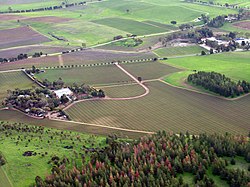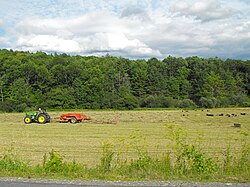


| Rural area |
|---|
In general, a rural area or a countryside is a geographic area that is located outside towns and cities. [1] Typical rural areas have a low population density and small settlements. Agricultural areas and areas with forestry are typically described as rural, as well as other areas lacking substantial development. Different countries have varying definitions of rural for statistical and administrative purposes.
Contents
- Regional definitions
- North America
- South America
- Europe
- Asia
- Oceania
- Economics
- Development
- Electricity
- Migration
- Poverty
- Rural health
- Academic study
- Economics 2
- Rural planning
- Sociology
- See also
- References
- Further reading
- External links
Rural areas have unique economic and social dynamics due to their relationship with land-based industry such as agriculture, forestry, and resource extraction. Rural economics can be subject to boom and bust cycles and vulnerable to extreme weather or natural disasters, such as droughts. These dynamics alongside larger economic forces encouraging urbanization have led to significant demographic declines, called rural flight, where economic incentives encourage younger populations to go to cities for education and access to jobs, leaving older, less educated, and less wealthy populations in the rural areas. Slower economic development results in poorer services like healthcare, education, and infrastructure. This cycle of poverty contributes to why three quarters of the global impoverished live in rural areas according to the Food and Agricultural Organization.
Some communities have successfully encouraged economic development in rural areas, with policies such as increased access to electricity or internet. Historically, development policies have focused on larger extractive industries, such as mining and forestry. However, recent approaches more focused on sustainable development take into account economic diversification in these communities.
















